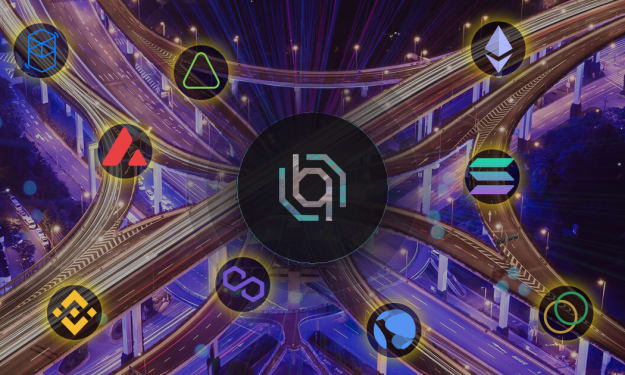Chain Bridge Project Design
The future is cross-chain and you can do that now a token bridge. A cross-chain bridge let's you launch your token on multiple blockchains and allow users send your tokens between chains. Launch your token on any EVM blockchain with our cross-chain bridge.

After years of research and development,We have finally entered a multi-channel market.There are currently 100 Multiple active public channels,Many of them have their own unique applications Users Geographic distribution、Security models and design compromise. Despite the reluctance of individual communities to believe,But the universe is entropic,The number of such networks is expected to continue to increase in the future.
This type of market structure requires interoperability between different networks. Many developers are aware of this, Over the past year, blockchain span Bridge Smart Contract Development Services have seen explosive growth.
This article will focus on four aspects:
Explain why chain bridges are so important
Overview of Different Chain Bridge Designs, And Their Advantages and Disadvantages
Discover the current ecology of chain bridges
Future prospects of Cross chain bridge development
Interoperability unleashes innovation
As ecosystems develop, They will develop their own unique advantages, For example, greater security、Faster throughput、Cheaper business、Better privacy、Specific resources available(For example, storage、Computation、Width band)And regional communities of developers and users.Why are chain bridges important?,Because they allow users to access new platforms and protocols for interaction,Allows developers to collaborate in building new products. More specifically,, They can:
Increase the productivity and utility of existing crypto assets
.Cross-bridges allow existing crypto assets to go new places and do new things.
Yes. DAI Sent to Terra, And so In Mirror Buy composite assets or Anchor Earn income;
From Flow Send to ethereum TopShot,Used as NFTfi Guarantee;
Use DOT And ATOM As Collateral Maker Access DAI Loans
Make existing agreements more powerful in terms of product functionality
Build a cross chain bridge expand the design space in which the Protocol can be implemented.
InSolana And Avalanche Moving Forward YFI Smooth Mining; On Ethereum NFT And Rarible On Flow Protocol Shared Backlog Across Chains For
JeanIndex Coop LaunchPoSIndex
Chain bridges provide users and developers with more choices. For example:
InOptimism、Arbitrum And Polygon Upscale DEX Arbitrage(For example,,Sushi)
Payment in bitcoin ARweave Storage fees on
In Tezos Participation PartyBidDeNFTCollective purchase of funds
Scientific popularization of the chain bridge
At the abstract level, A chain bridge can be defined as a system for transmitting information between two or more blockchains. most span chain bridge designs have multiple elements:
Monitoring:There is usually one.Actor、“Prophetic Machine”、“Validator”Or “Repeater”, Responsible for monitoring the status of the channel.
Message transmission/Relay:Actor After receiving the event, need to transfer the information from the source channel to the target channel.
Consensus:In some models, consensus must be reached among the participants monitoring the supply chain, to pass this information to the target chain.
Signature:ActorInformation sent to the target channel must be encrypted and signed individually or as part of a threshold signature system.
In general, about 4 kinds of chain bridges:
Asset-specific(Asset-specific):Its sole purpose is to provide access to specific assets from external channels. underlying assets.Bitcoin is the most common asset that is linked to other chains(VariousxBTC),There are seven different bridges on ethereum only.These bridges are the easiest to achieve,Liquidity is also good, But the function is limited, must be redone on each destination string.
Chain-specific(Chain-specific):Linking bridge between two blockchains,The main operation is to lock and unlock the tokens on the source chain,Encapsulated assets flowed into the target chain.Due to the limited complexity of these chain bridges, They can usually be brought to market faster, But it is not easy to expand to a larger ecosystem. An example is Polygon’s PoS Bridge, It allows users to transfer assets from ‘ethereum to Polygon,And vice versa,But only these two chains.
Application-specific(Application-specific):Applications providing access between two or more blockchains, But only for this application. The application itself benefits from a smaller code base; There is no of complete application on each blockchain,On the contrary.,There is usually more light on each blockchain、Modular“Adapter”.Blockchain with deployed adapter can access all other blockchains to which the application is connected,So there is a network effect. But, the disadvantage is that it is difficult to extend this functionality to other applications(For example, from loan to transaction). Here are specific examples: Compound Chain And Thorchain,They separately built separate blockchains dedicated to lending and cross-chain transactions.
Generalized(General):Specially designed protocol for transmitting information across multiple blockchains. fixed),This design has a strong network effect,The unique integration of a project allows it to access the entire ecosystem of the bridge.The disadvantage is that,Some designs often value security and decentralization to achieve this expansion effect,It may have complex unintended consequences for the ecosystem..Here is an example: IBC,It is used in two heterogeneous chains(Have final confirmation guarantee)Send message between.
In addition, Chain bridge design can also be classified according to the mechanisms used to verify cross-chain transactions, There are about three types:
External Auditor and Federation
There is usually a set of validators that monitor “Mailbox” address, and perform operations on the target chain according to the consensus. Asset transfers are usually done by locking the assets on the source Build a token bridge and sinking an amount equal of assets on the target chain. These are usually bonded(bonded)Validator,Using separate tokens as a security model.
External auditor or federated system
Thin Clients and Relays
ActorMonitor events on the source chain,And generate encrypted proof of past events recorded on the chain…These certificates are passed along with the blocks to the contracts on the target chain(i.e.:“Thin Client”) ,Then check that an event has been registered, and perform the operation after verification.SomeActorNeed“Relay”Blocks and certificates.Users can“Self — relay”Trade,But,There is also a survival assumption.,It is to say that the repeater will continuously transmit data. This is a relatively safe chain bridge design, because it guarantees efficient and unreliable delivery without trusting intermediate entities, but it is also resource-intensive,Because developers have to build a new smart contract on each new target chain, parsing proof of state from the source chain, and validation itself can be costly.
About the Creator
Sandyzakk
Enter and create digital economies, leveraging blockchain technology with our Metaverse development services. Design, build, and launch amazing experiences for your users effectively with a leading metaverse development company.






Comments
There are no comments for this story
Be the first to respond and start the conversation.